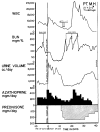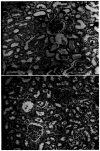FACTORS IN SUCCESSFUL RENAL TRANSPLANTATION
Figures












References
-
- Bencosme SA, Lazarus SS. Pancreas of cortisone treated rabbits. A M A Arch Path. 1956;62:285. - PubMed
-
- Calne RY. Renal transplantation. Baltimore: Williams & Wilkins Company; 1963.
-
- Calne RY, Alexandre GPJ, Murray JE. A study of the effects of drugs in prolonging survival of homologous renal transplants in dogs. Ann New York Acad Sc. 1962;99:743. - PubMed
-
- Calne RY, Murray JE. Inhibition of the rejection of renal homografts in dogs by Burroughs Wellcome 57-322, S. Forum. 1961;12:118. - PubMed
MeSH terms
Substances
Grants and funding
LinkOut - more resources
Full Text Sources
